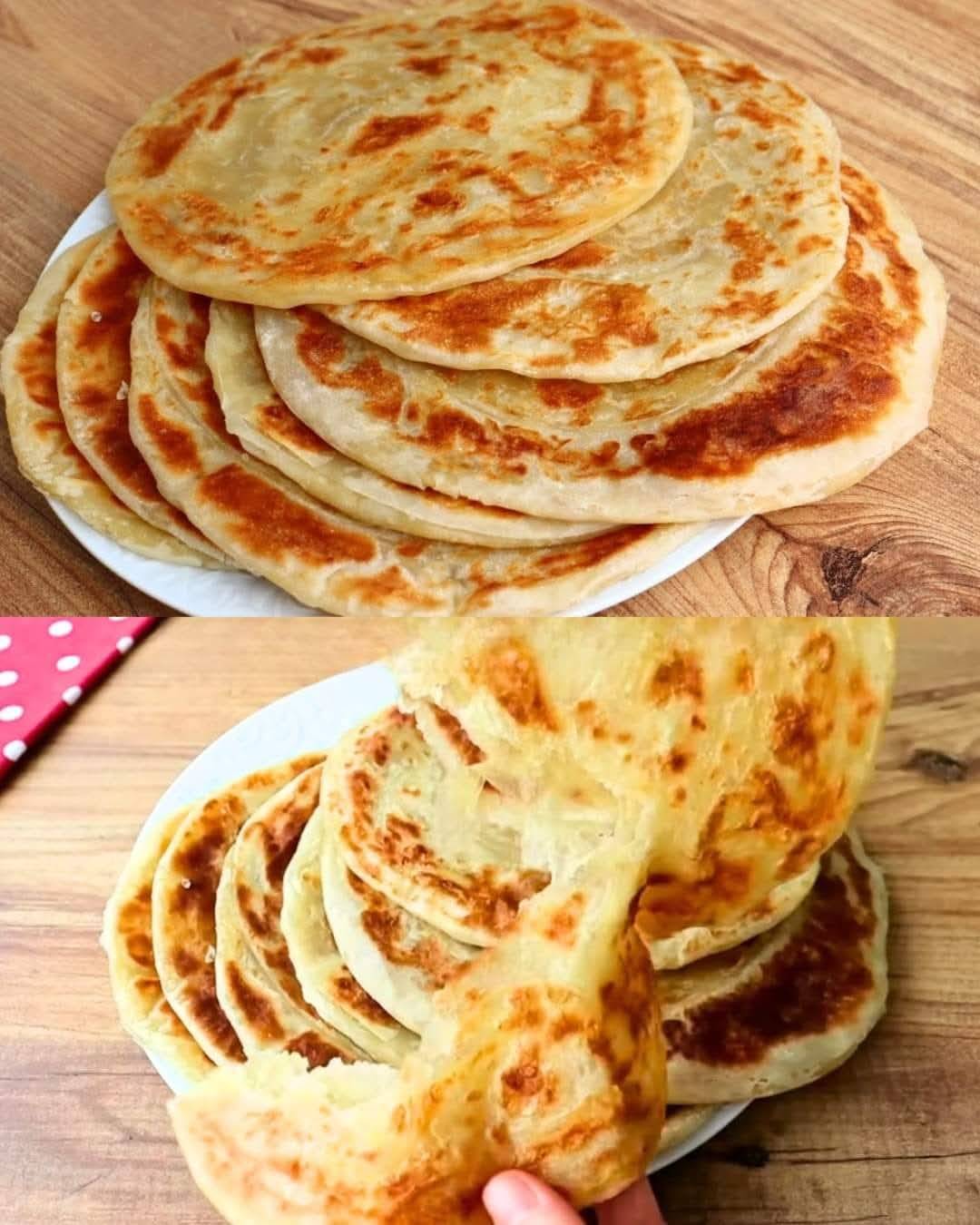ADVERTISEMENT
5. Shape and Roll:
- Take one dough ball and roll it out into a thin oval or rectangle using a rolling pin. Aim for an even thickness to ensure even cooking.
6. Add Butter:
- Spread a portion of the melted butter evenly over the rolled-out dough.
7. Fold and Rest:
- Fold the dough in half lengthwise, then roll it out again to the same thinness. Repeat this buttering and folding process 2-3 times.
- Let the dough rest for another 10 minutes to relax the gluten.
8. Cook:
- Heat a skillet or griddle over medium heat.
- Cook each piece of dough for about 12-15 minutes per side, or until golden brown and cooked through.
Tips:
- Adjust Flour Quantity: Depending on humidity and other factors, you might need to slightly adjust the flour quantity to achieve the desired dough consistency.
- Flavor Enhancement: For a richer flavor, let the dough rest overnight in the refrigerator.
- Experiment: Try different fillings or toppings such as cheese, herbs, or honey to add variety to your flatbreads.
Why This Quick and Easy Flatbread Recipe Works
Simple Ingredients, Big Results:
This recipe uses basic pantry staples—flour, water, salt, and butter—to create a delicious and versatile flatbread. These ingredients are readily available in most households, making it easy to prepare without a special trip to the store.
Balanced Dough:
- Flour: Provides structure and body to the dough.
- Water: Hydrates the flour and activates the gluten, giving the dough elasticity.
- Salt: Enhances flavor and controls yeast activity if the dough is left to rest longer.
- Butter: Adds richness and helps create a flaky texture.
Technique:
- Kneading: Kneading the dough for about 10 minutes develops the gluten, resulting in a smooth and elastic dough that is easy to work with and yields a tender flatbread.
- Resting: Allowing the dough to rest relaxes the gluten, making it easier to roll out. Resting also improves the texture and flavor of the final product.
- Butter Layers: Spreading melted butter and folding the dough multiple times creates layers, which contribute to a flaky and tender flatbread.
- Cooking Method: Cooking on a skillet or griddle allows for even cooking and browning, creating a delicious crust while keeping the inside soft and flavorful.
Versatility:
This flatbread can be customized with various fillings, toppings, and flavors:
- Fillings: Cheese, herbs, garlic, or even a bit of honey can be added for different taste profiles.
- Toppings: Serve with dips, spreads, or use as a wrap for meats and vegetables.
Quick Preparation:
- No Yeast: The absence of yeast means there’s no need for lengthy proofing times, making this recipe faster to prepare.
- Fast Cooking: Each flatbread cooks in about 12-15 minutes per side, allowing you to have fresh bread on the table quickly.
Adaptability:
- Resting Time: For richer flavors, you can extend the resting time by refrigerating the dough overnight. This flexibility allows you to fit the recipe into your schedule.
- Adjustable Flour: You can tweak the amount of flour slightly based on your dough’s consistency, making it foolproof for different kitchen environments.
Conclusion:
This flatbread recipe works because it combines simple ingredients with effective techniques to create a delicious, versatile bread. The careful balance of ingredients and steps ensures a tender, flavorful flatbread that can be customized to suit any meal. Whether you’re a seasoned baker or a beginner, this recipe is approachable and reliable, delivering satisfying results every time.
ADVERTISEMENT
